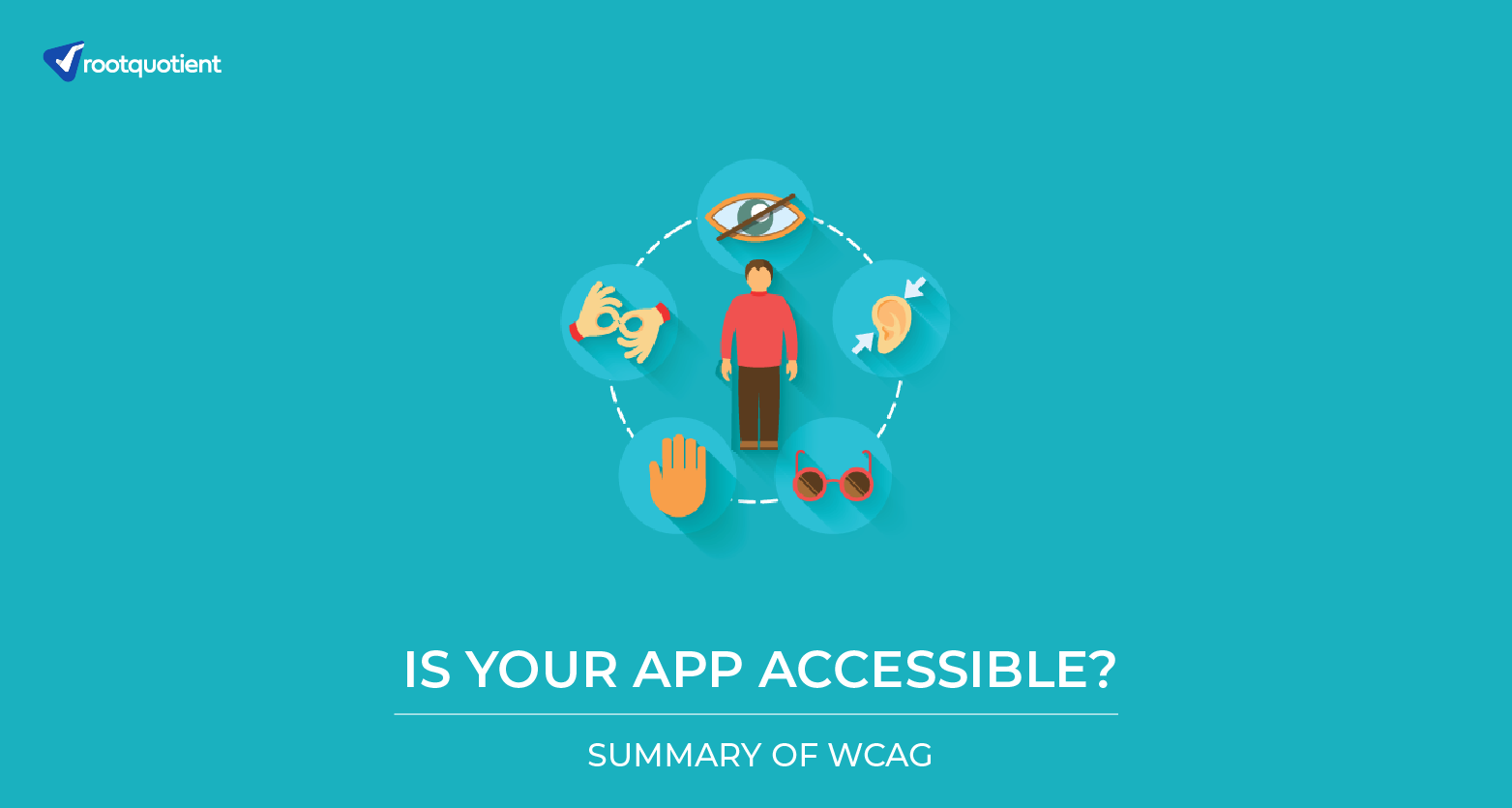As the world is moving towards inclusivity and anti-discrimination, technology comes a long way in assisting to achieve this feat. WHO says that about 15% of the world population is disabled in some way. This means a product or a service may not reach about a billion people if it is not built with proper accessibility. The primary aim of any app is to achieve the widest range of users and having an accessible app ensures it reaches everyone and also means inclusivity in society. It should be a no-brainer that an app should be available for anyone to use irrespective of their mode of usage. In 2017 at the Worldwide Developer Conference, accessibility was the main discussion and it was a strongly suggested practice. A company need not wait to be legally bound to be accessible. A progressive and inclusive society is what technology should support.
The Web Accessibility Initiative lists what should be considered while creating an app or a website. There is a clear difference between apps exclusively for people with disabilities and an app that is generally accessible. Accessible apps should have assistive technologies that act as alternate options for people who cannot use the majorly used ones. For instance, Tecla Access is an app that turns the iPhone into a hands-free device to be used by those who cannot use a normal touch screen.
Here are some suggestions, that also find themselves as part of Web Content Accessibility Guidelines (WCAG). Though this is not the exact list presented by them, this could be used as a summary of what WCAG wants to convey to the creators.
1. Have assistive technology
Some users may not be able to see the visuals or GIFs and a text-to-speech option alongside would assist them in experiencing the app to its fullest capacity. For someone who cannot hear the audio, captions that sync with the video might be helpful. Thus, it is necessary to have more than the mainstream options that cater only to the majority, curbing its accessibility
2. Include options that are actually compatible
Adding captions to the videos alone does not resolve the issue at hand. It has to be perfectly in sync with the visuals and also has to be slow enough for the user to understand. A person used to a certain accent need not always follow a foreign accent in the audio. Options that are compatible to users at any given situation only results in inclusive technology.
3. Use appropriate colours
About 8% of men and 1% of women in the world are colour blind. The distinct contrast between the foreground and background colours that do not merge in the spectrum of people with colour blindness should be followed. The idea is to make each screen readable and watchable irrespective of the user.
4. Avoid light flashes
Swift flashes of light may induce seizures in some users. If an app has such flashy lights or swiftly changing backgrounds, an option to turn these off would help those who might be affected by it. Thus, the requirement of the app is not compromised and also is compatible with users who do not need it.
5. Adjustive screens for everyone
A person with a learning disability might require more time to read what’s on the screen. Some apps have pages that time out after some time. This excludes many people, including aged users who need time to process the material. The users should be able to have sufficient time to read or listen to the material.
A person who might require a bigger font should be able to adjust the font or change colours and brightness according to their visual capability. The app should not dictate the user.
6. Obvious navigation options
Navigation options that are readily visible on the screen are helpful for any user. However, for people who may not be able to access the options easily, obvious options feature as a necessity. Proper highlights like bold or underline or different colours are some options to make them easily visible and identifiable.
We at Rootquotient are determined to create apps that follow these guidelines and make them highly accessible & inclusive. Talk to our experts to know more.
It is unfortunate that despite such specific guidelines, most of the apps cater only to the majority of the population. The above-mentioned features not only assist those with disabilities but also those who are not in a position to make use of the available features. For instance, a person driving can make use of the audio options available in the app. When inclusivity also means more options for the majority, what keeps creators from creating inclusive apps? With advanced technologies like AI and machine learning in place, it is our duty, as humans, to make these machines accessible.
This is also beneficial from a business perspective. Inclusivity means more usage and a wider range of consumers. In a world where humans are used to looking through the lens of the abled and the majority, the disabled deserve more space. The main purpose of technology is to make life easier and what more than being of use to those who actually need it?
